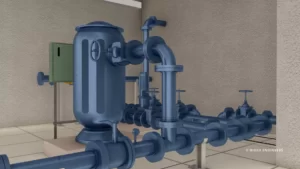The start of the year 2020 has been very tragic for almost all sectors across the globe. The construction industry is the second largest contributor to India’s GDP after the agriculture sector. Due to this, it offers employment to an outsized range of people.
According to the survey conducted by the government of India, the construction sector was worth $126 billion in 2016 and is growing rapidly with time. Along with this, it is estimated that the value of this sector can increase up to 7 times by the year 2028.
Apart from these encouraging figures, there are some dark challenges like labour shortage, material costs, lack of technological advancements, and many more that hampers the growth of this sector.
Still, wondering?
Let us take a deep dive into the major challenges that limit the growth of the construction industry in India:
Cost
All of us are well aware that the real estate and construction sector has suffered immensely due to lockdown restrictions. Despite these challenging situations, the cost of raw materials kept on rising at a faster pace. Some of the reports revealed that in the year 2021 the cost of building materials will increase by 20%. These new tariffs affect the overall cost of the construction process which impacts the contractors largely.
The cost of construction materials rises after the implementation of Goods and Service Tax popularly known as GST. Some materials used for the construction industry fall into the 28% GST bracket which automatically leads to higher expenses. Due to all these factors, it’s difficult to purchase steel, lumber, aluminum, and other expensive materials as their prices are increased up to 17% to 20%. This further leads to shorter profit margins as clients are always in search of affordable and reliable options.
With the utilization of BIM, the construction costs can be estimated long before the construction phase begins. This brings the opportunity for the Architects to discover ways to optimize the cost of construction.
The use of 5D BIM Simulation in the construction projects can highly improve the cost estimation accuracy and time consumed for the cost-estimation process. It is estimated that the use of BIM can cut about 40% of the unbudgeted change.
Virtually creating a building model can streamline the construction process, bringing a shorter project life cycle and reducing the cost of construction.
Quality
Quality is one of the most crucial factors to ensure customer satisfaction in construction projects. Poor quality leads to wastage of both time and resources involved in the projects. To meet the expected quality, we need to ensure that the project requirements and standards are met. To accomplish this task perfectly, we need to have a skilled and specialized workforce at our job sites.
According to research, there are an estimated 290,000 open construction jobs available in the current day scenario.
Still, it is challenging to find skilled and efficient labour force. In a survey, contractors revealed that 70% of their workforce is unskilled. These unskilled workers can make costly mistakes which can add stress to the contractor’s end. This ultimately hampers the quality of a project and subsequently risk in losing a potential customer. So, it is well advised to attract a good crew by offering attractive packages or wages to ensure consistent growth of the organization.
Implementation of BIM process in the design and construction can be yet another way to improve the quality of construction projects. The goal of BIM is to use a single source of truth. The implementation of BIM Level 3 helps team members in utilizing a single central data repository rather than sharing information among the stakeholders. Enabling BIM process helps to improve the design quality by eliminating clashes and reduce re-works through efficient utilization of information.
BIM is not about sharing information, rather it’s about the quality of the information that being shared. A detailed information model comprises of the make, model, material, specification, and accurate quantities to be used in construction.
Time
The productivity depends on how we utilize the slice of our time. The same logic applies to the construction industry, where time is the essence in construction. A delay of single day can lead to the cost of millions. This can cause a negative impact on the business and can harm the reputation of the contractor.
In order to avoid this, effective time management skills should be followed while assigning the task to your workers with proper resources and adequate time frames to minimize the cost of implementation. Plan your project to select the best construction method for scheduling your workforce. This will allow you to rise through the ranks at the allotted time frame which will increase the proficiency of your laborers and offer customer satisfaction to your clients.
Shorter the project lifecycle, greater the cost savings in a project. Utilizing a centralized data repository for data exchange brings consistency in accessing information and it cut-down time spend on requesting information from the other stakeholders involved.
The utilization of virtual 4D BIM models can optimize the construction sequence based on the cost, labor and material availability. This opens the opportunity for the procurement team to order the materials in advance to avoid delays and unbudgeted changes.
Conclusion
The challenges have been a part of the journey in the Construction industry. Over time, the challenges keep on changing, but it could not stop the growth of the industry. The traditional challenges are now being tackled and overcome with the advent of the BIM process. It is helping the industry to overcome its various decade long problems with the latest technology and making it future ready.






